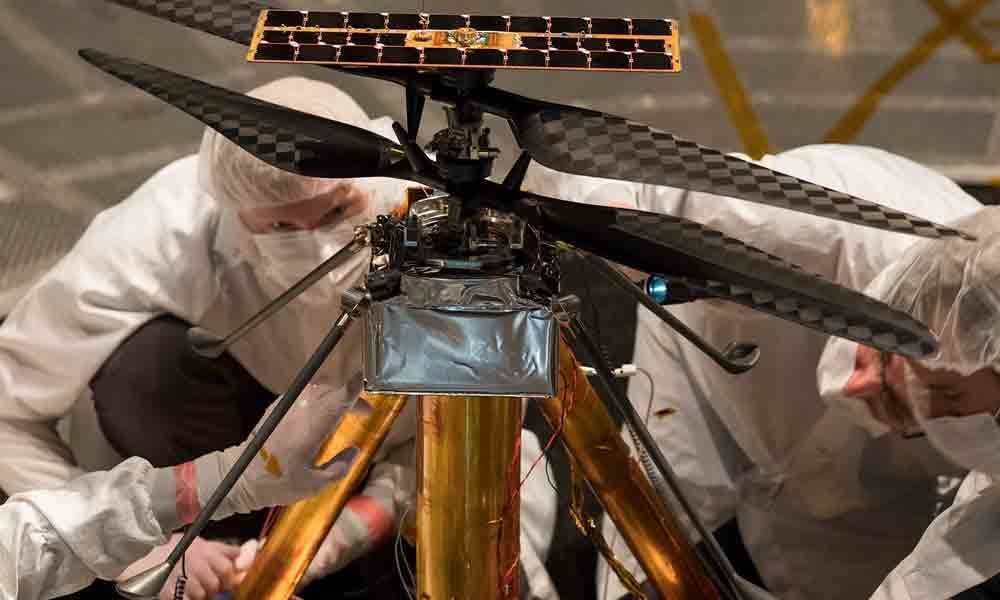Live
- Sravan vows to strengthen GCC
- Rebest distributes scholarships to 20 students
- Centre cautiously optimistic on growth
- Awareness camp on child exploitation held at Lendi
- Samantha Opens Up About Divorce and Wedding Gown
- CM’s change of heart due to farmers & BJP fight in Lagacharla: D K Aruna
- Gold rates in Delhi today slashes, check the rates on 26 November, 2024
- Dalal St hogs limelight as BJP shines in Maha
- Gold rates in Vijayawada today slashes, check the rates on 26 November, 2024
- Gold rates in Hyderabad today slashes, check the rates on 26 November, 2024
Just In

NASA's Mars Helicopter first vehicle in history that will attempt to establish the viability of heavier-than-air vehicles flying on another planet has successfully passed key tests, the US space agency said.
NASA's Mars Helicopter first vehicle in history that will attempt to establish the viability of heavier-than-air vehicles flying on another planet has successfully passed key tests, the US space agency said.
"Nobody's built a Mars Helicopter before, so we are continuously entering new territory," said MiMi Aung, project manager for the Mars Helicopter at NASA's Jet Propulsion Laboratory in the US. "Our flight model the actual vehicle that will travel to Mars has recently passed several important tests," said Aung. In January this year the team had operated the flight model in a simulated Martian environment.
Then the helicopter was moved to Lockheed Martin Space in Denver for compatibility testing with the Mars Helicopter Delivery System, which will hold the 1.8-kilogramme spacecraft against the belly of the Mars 2020 rover during launch and interplanetary cruise before deploying it onto the surface of Mars after landing. As a technology demonstrator, the Mars Helicopter carries no science instruments, NASA said in a statement.
Its purpose is to confirm that powered flight in the tenuous Martian atmosphere (which has one per cent the density of Earth's) is possible and that it can be controlled from Earth over large interplanetary distances. However, the helicopter also carries a camera capable of providing high-resolution colour images to further demonstrate the vehicle's potential for documenting the Red Planet.
Future Mars missions could enlist second-generation helicopters to add an aerial dimension to their explorations. They could investigate previously unvisited or difficult-to-reach destinations such as cliffs, caves and deep craters, act as scouts for human crews or carry small payloads from one location to another.
The Mars Helicopter and its delivery system were checked to make sure that the electrical connections and mechanisms that linked the flight vehicle with its cradle fit snuggly. The duo was subjected to vibrations they will experience during launch and in-flight operations.
The thermal vacuum portion of the testing introduced them to the kinds of extreme temperatures (down to -129 degrees Celsius) that they will encounter in space and on Mars and that could cause components to malfunction or fail.

© 2024 Hyderabad Media House Limited/The Hans India. All rights reserved. Powered by hocalwire.com







